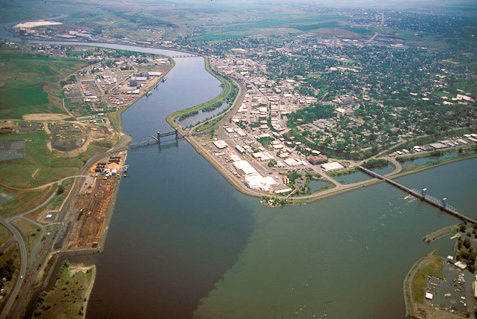The South Fork [the Snake] is a greenish blue, the north as clear as cristial” Clark wrote when the Corps of Discovery arrived at the mouth of the Clearwater on 10 October 1805. Sergeant Gass described the color of the Snake River as “goslin-green.” The Corps’ four-day trip to this point from Clearwater Canoe Camp in their five crowded dugout canoes was a taste of things to come. As the steep, seasonally shallow river bore the Corps of Discovery through a descent of nearly three hundred feet in forty-five miles, it exposed thirty-nine rapids, the last of which was approximately where the bridge is, at left center in the photo. Earlier, several Nez Perces had assured them this would be “the last of the bad water” for quite a distance, but the Corps still had 465 miles to float and 738 feet to descend before reaching tidewater.
Once again showing his ability to combine Indian information with his own successive, discrete visual impressions of local topography, into mental pictures of the larger geography around him Clark realized that the Snake, or Kimooenem as the Nez Perce called it, was the lower part of the river he had named for Lewis three months and 250 miles ago, when they were among the Lemhi Shoshones.
Clark described the land here as a treeless, “high level plain,” where Nez Perce were harvesting camas and cous (pronounced “cowz”) roots, both of which were staple foods and valuable trade goods. Lewiston, Idaho (center and left), named for Meriwether Lewis, was founded in 1860 as a supply center for the nearby gold fields. In the lower right corner of the picture is a fragment of Clarkston, Washington.
From Discovering Lewis & Clark from the Air
Photography by Jim Wark
Text by Joseph Mussulman
Reproduced by permission of Mountain Press

